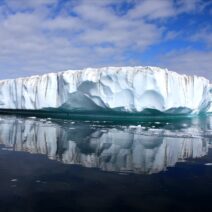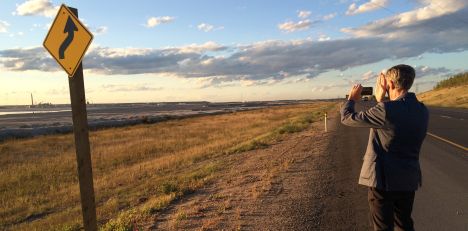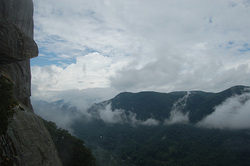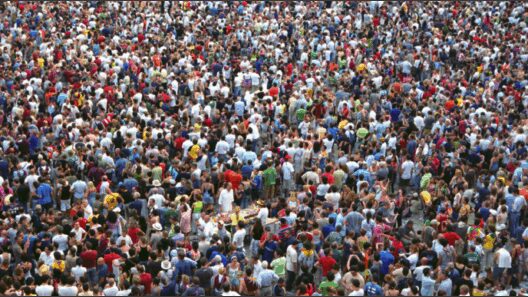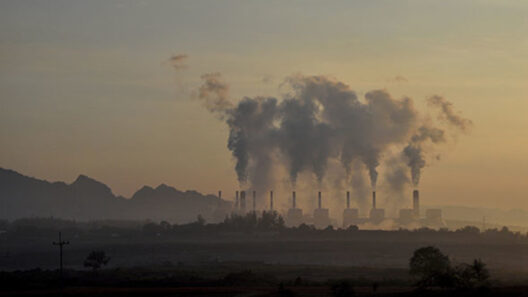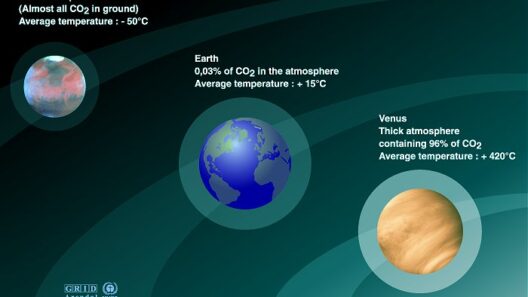As the climate crisis escalates, the dairy industry stands at a crossroads, facing unprecedented challenges that extend beyond mere fluctuations in temperature. Dairy farming, once a staple of agricultural systems, now finds itself entangled in the complex web of global warming. The question arises: how does climate change not only impact dairy production but also reshape the very foundations of the industry itself? This inquiry illuminates the myriad ways that a warming planet challenges traditional practices and compels innovative solutions.
The first visible impact of global warming on the dairy industry comes from the increased frequency and intensity of extreme weather events. Droughts, floods, and heatwaves are becoming commonplace, and such anomalies possess profound ramifications for dairy operations. For instance, in regions already susceptible to arid conditions, prolonged drought can decimate forage availability, leading to significant disruptions in feed supplies. When cattle lack adequate nutrition, both milk yield and quality are adversely affected, creating a cascading effect that reverberates through the supply chain.
Another critical concern is the rising temperature itself. Cows are sensitive to heat stress, which can lead to decreased milk production, reproductive issues, and heightened susceptibility to disease. As temperatures soar, so too does the stress on livestock, prompting farmers to invest in costly cooling systems or alternative management strategies. This shift not only raises operational costs but also poses ethical dilemmas regarding animal welfare, as producers grapple with the challenges of sustaining healthy livestock in increasingly hostile conditions.
Moreover, with global warming comes the specter of shifting geographic ranges for dairy farming. Traditionally fertile areas may become less hospitable, forcing dairy producers to reconsider where and how they operate. This geographic shift may lead to increased competition for resources in regions that were previously marginal for dairy farming. As farmers pivot to new locales, the implications for local economies and traditional agricultural practices must not be overlooked. The intertwining of global markets and local production creates a complex tapestry of interdependencies that can either bolster or threaten regional food security.
Dairy’s dilemma also extends to water scarcity, exacerbated by climate change. Water is a critical resource for dairy farming, not just for animal hydration but also for irrigating forage crops. As droughts become more frequent, the competition for this precious resource intensifies. Farmers who once took water access for granted suddenly find themselves navigating a minefield of regulations and potential shortfalls. This predicament encourages a re-evaluation of water management techniques and a push toward more sustainable practices, such as utilizing rainwater harvesting systems or adopting drought-resistant forage crops.
The environmental impact of dairy farming cannot be ignored in this discourse. The industry is a significant contributor to greenhouse gas emissions, primarily in the form of methane released from enteric fermentation in ruminant animals. As global temperatures rise, the focus on reducing emissions within the dairy sector intensifies. Farmers are increasingly adopting innovative strategies to mitigate their carbon footprint, such as integrating feed additives that reduce methane output or employing more efficient manure management techniques. These measures not only address the urgent need for emissions reductions but can also enhance farm viability in a carbon-sensitive marketplace.
Moreover, global warming can influence the prevalence and distribution of pests and diseases that affect livestock. As temperature and precipitation patterns shift, new agricultural pressures emerge, potentially destabilizing established dairy practices. For example, warmer climates may facilitate the spread of certain vector-borne diseases, such as those carried by ticks and flies, which can adversely impact animal health and productivity. A dairy producer’s ability to anticipate and respond to these evolving challenges becomes increasingly vital for maintaining herd health and, consequently, profitability.
In response to these multifaceted pressures, dairy producers must also engage in a process of transformation. Techniques like regenerative agriculture and holistic management offer pathways toward resilience. Such systems emphasize soil health, biodiversity, and sustainable water management, enabling farms to thrive even amid adverse conditions. Additionally, by fostering local collaborations and leveraging technology, dairy farmers can create adaptive systems that promote long-term sustainability and economic viability.
Another intriguing aspect of dairy’s dilemma is the evolving consumer landscape. As awareness of climate change grows, so too does demand for environmentally responsible products. This shift presents dairy producers with an unforeseen challenge: how to align production practices with consumer expectations without compromising quality or profitability. Brands that transparently communicate their sustainability efforts may find themselves at a distinct advantage in a market increasingly defined by ethical consumerism.
Ultimately, the road ahead for the dairy industry is fraught with uncertainty, yet it is also replete with opportunity. The pressing challenges posed by global warming may serve as a catalyst for innovation and collaboration within the sector. By prioritizing sustainable practices, investing in adaptive strategies, and actively engaging with consumers, dairy farmers can navigate the complexities of climate change while continuing to provide essential nutrition worldwide.
As we ponder the future of dairy in a warming world, we must embrace the cooperative spirit of adaptation and resilience. The question remains: will the dairy industry rise to the challenge, transforming its practices in the face of global warming while ensuring that it continues to nourish populations across the globe?


